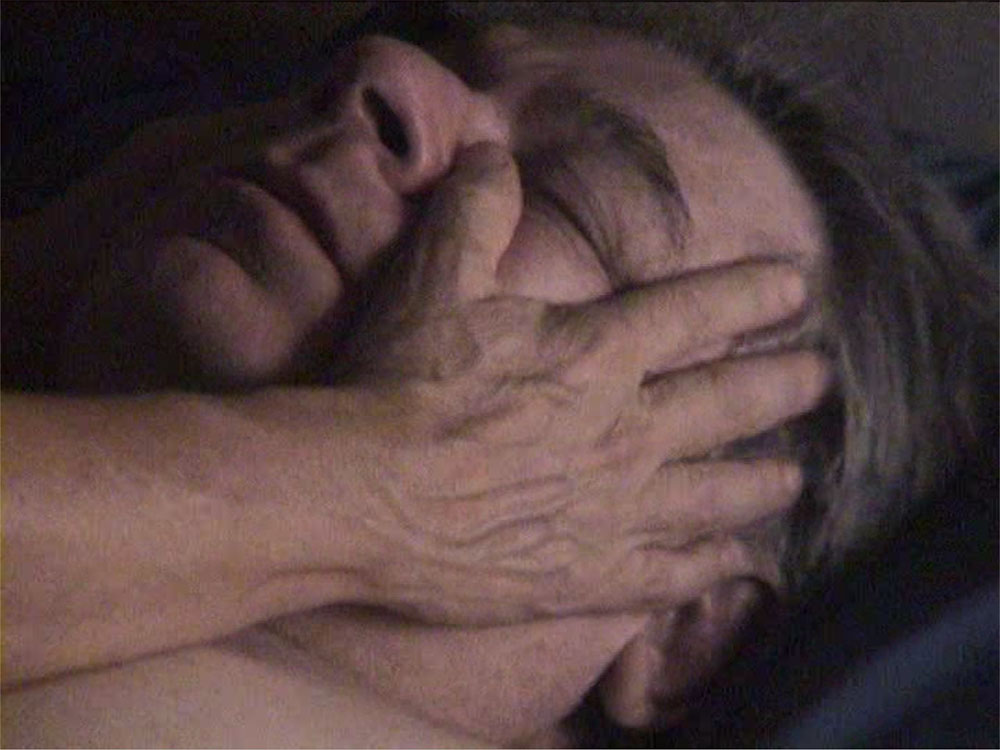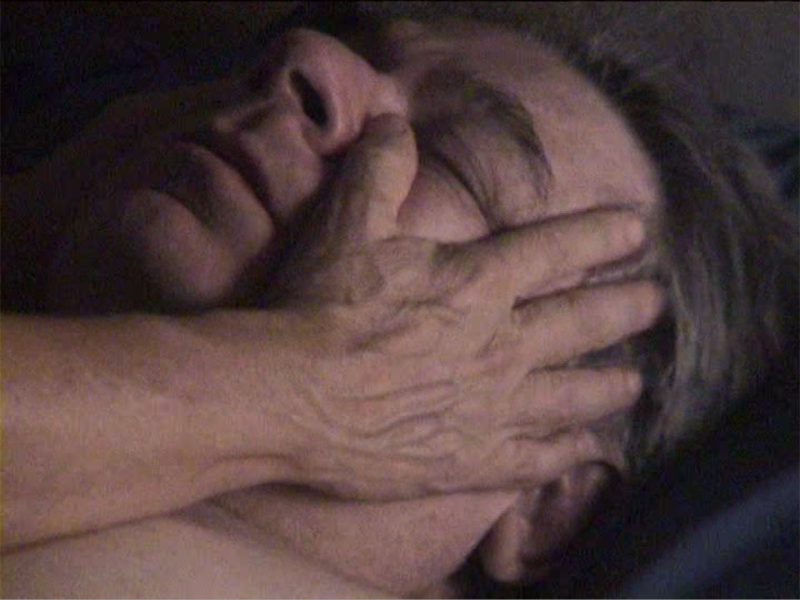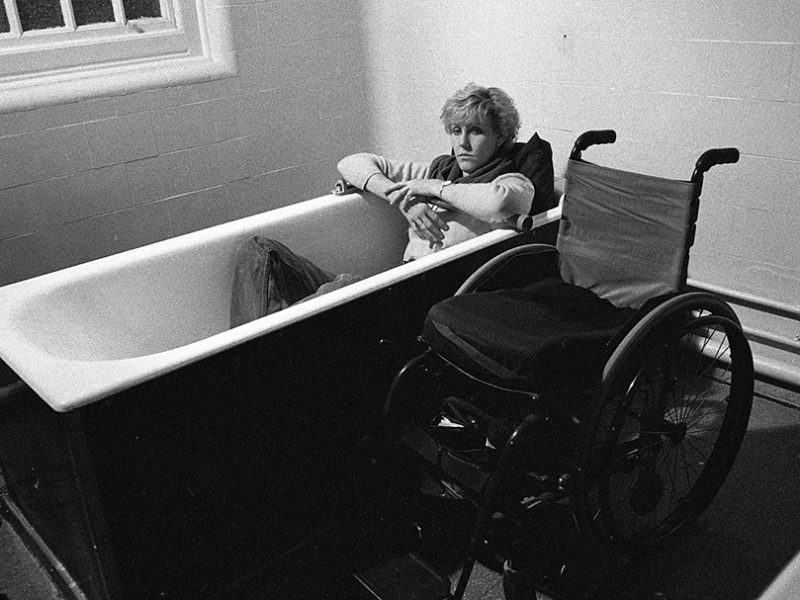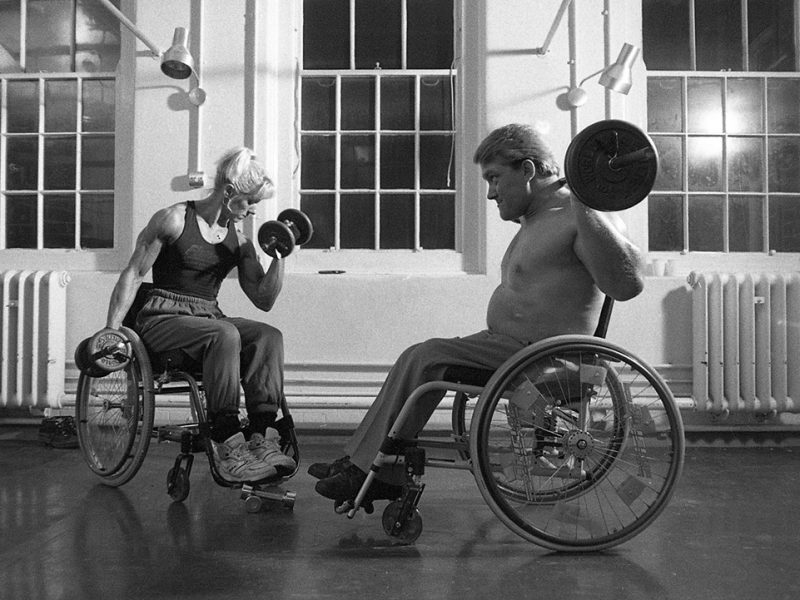The first part of Intoxicated By My Illness, which we are showing as part of a live discussion event on Thursday 27 May, debuted at Rotterdam in early 2001. It was Dwoskin’s first film in three years, and the first of what would prove to be the last phase of his career. He had come from the underground: his first films were made with no money, and no guarantee of an audience. Since the 1970s he had worked with budgets – from television, from the BFI, from the Arts Council, from a patron. But now he was without a sponsor, and back working much as he had three decades earlier – only now with digital technology, rather than 16mm.
Dwoskin was not present for the screening, billed as “Films in Progress”. On 12 January he had gone into intensive care with a collapsed lung, and would remain there almost a month. “It was the closest encounter between living and dying since I contracted polio,” he wrote in his journal. Dwoskin had persistent breathing difficulties; he had been in hospital with pneumonia exactly five years earlier, in 1996. “I tried lifting a camera yesterday and that was very difficult,” he wrote on that occasion. Pain Is, his last funded film, shown at Rotterdam in 1998, included shots of Dwoskin on a breathing machine in hospital. Soon he had one installed in his house.
An international co-production that had taken a lot of wrangling to get started, Pain Is had ended in acrimony. At an early stage Dwoskin – who did not originally plan to appear in the film – had been told by his backers at ZDF/Arte that his treatment was not personal enough, too much like a documentary. When presented with the finished product they would take the opposite view. The film was an exploration of pain in all its forms, but its producers felt there was too much of what they saw as “S&M” material, meaning scenes of tattooing and piercing as well as the most contentious scene, referred to in the correspondence as the “dominatrix whipping slave” scene, Dwoskin being the slave, Melanie the dominatrix.
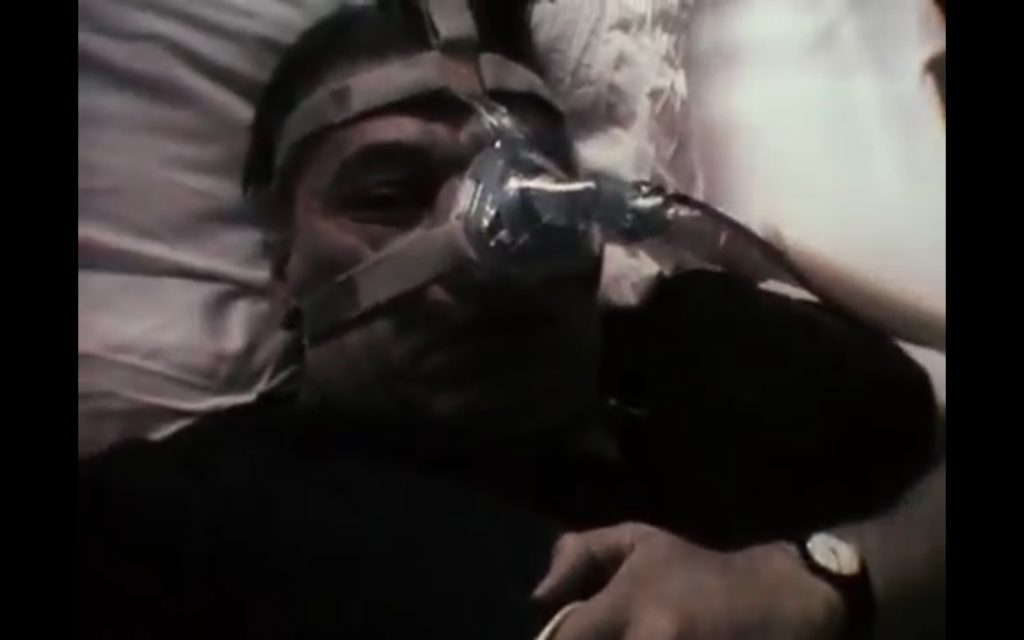
Pain Is…, Stephen Dwoskin, 1997. Courtesy of the artist and LUX, London.
Dwoskin was never lavishly reimbursed for his television work, and without creative freedom it was difficult to see the point of going on. British cultural institutions had already closed their doors to him. With the exception of Face of Our Fear in 1992, none of his films since the early 1980s had been given decent timeslots, and some were not shown at all. The BBC had shown some early interest in co-producing Pain Is, but it was ultimately rejected by Mark Thompson. Dwoskin did have critical supporters, however, notably at the journal Trafic. Jonathan Rosenbaum gave Pain Is a rave in his Rotterdam round-up in the Spring 1998 issue, and Raymond Bellour, a member of the editorial board, arranged publication of some of Dwoskin’s correspondence with his producers later in the year – alongside a translation of Laura Mulvey’s essay on Trying to Kiss the Moon.
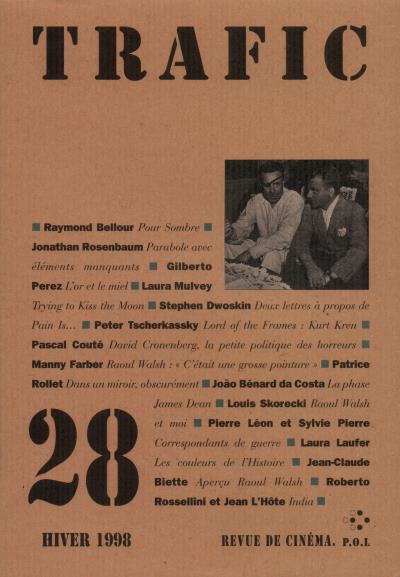
Rosenbaum had called the dominatrix scene the most memorable in the film, and Dwoskin would use footage from the same Hi8 tape in Intoxicated By My Illness, which is in some senses a remix of Pain Is: wordless, stripped to its essentials, even more daring in its juxtapositions of (among other things) medical care and sexual pleasure. Dwoskin had continued filming with Melanie after Pain Is was finished, without necessarily having a definite project in mind. In March 1999 he wrote: “I looked at some of the videos I’ve been trying with Melanie. Awful stuff. I reckon I’m on the wrong track. To make films (video, or whatever) I have to rethink my whole process and idea. Re make the idea; re look at the approach; incorporate the greater limitations – free myself from the confines of my deteriorating body.”
Video, or whatever – Dwoskin had a vexed relationship with the new digital editing equipment that he needed to finish the film. He does not seem to have had an aesthetic or theoretical objection – he had been flirting with digital video since the mid-1990s – but as of January 2000 he was complaining of computers that “You spend more time (and money) trying to get them to work than you do in actually using them to do your own work.” Its convenience could be overstated. But by July he had hit upon the editing techniques he would use for the film, which were quite unlike those of any in his filmography to date. He tried to capture what digital montage might mean in a grant application:
The shot material reflective of the “themes” (in this case those elements belonging to either illness or sexuality) will be pulled out and restated – providing a reaffirmation through juxtaposition and repetition – then pressed up against “other” archetypes and already established codes (e.g.: musical movie themes representing fantasy fiction, extracts of text and voices, etc.) In other words, the assembly of the filmed material will follow an almost “ad libbed” manner.
(He didn’t get the grant, of course.)
They will be edited as montage (of course, the original term for editing) and collage; mixed together; matched, stretched, overlaid, reduced or enlarged – obviously dictated by the particular contents of each set of images and by the “accidental” consequences perpetuated by the technology (digital video, computer compression, etc.) in processing them.
By July 2000 he also had his title, borrowed from Anatole Broyard. It was an extremely arduous production. “Now I don’t even know if my poor breathing will allow me to pick up a camera – or move,” he wrote in November. The July pitch was for a twenty-minute film. By Christmas 2000 he was talking of the film as being in two parts. On New Year’s Day 2001 he records completing the first part, and it was this that was shown at Rotterdam a few weeks later. He wanted to transfer it to film stock but lacked the funds.
It’s not clear whether the second part of the film was going to be called “Intensive Care” before his stay in hospital, but it was finished with this title over the rocky course of 2001. As before, he had to rely more than he would have liked on already-shot material. He had had an experimental muscle transplant into his right hand in childhood, and this was, he said, no longer working. “It is even hard to use a pen, and holding a camera is very troublesome and uncomfortable.” There were further hospital stays. “Medication wrong; stomach wrong; weakness; dense air making breathing difficult – the body in revolt – coupled with sadness; depression and loneliness,” he wrote on 23 August.
But it was finished in time for Rotterdam, in January 2002. Adrian Martin, in Senses of Cinema, called it a “masterpiece” that draws its audience “into a rare and precious intimacy in extremis”. Dwoskin, in what seems to be his final journal entry, wrote that “I should explain more what the festival was like but I’m just too tired.”
XXX
The Dwoskin Project, led by Rachel Garfield, is based at the University of Reading and supported by the AHRC. Visit its website: https://research.reading.ac.uk/stephen-dwoskin/
Henry K. Miller is a postdoctoral research associate at the University of Reading, editor of The Essential Raymond Durgnat, and author of the forthcoming The First True Hitchcock.

